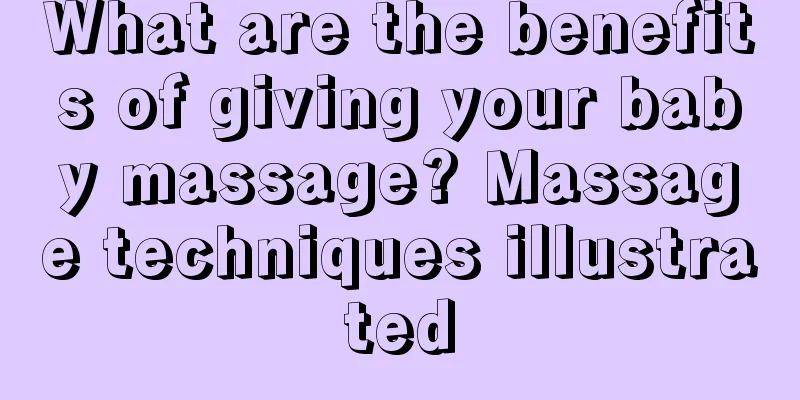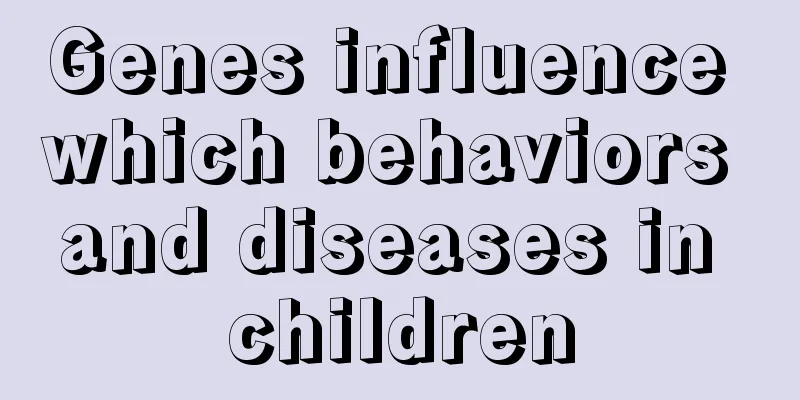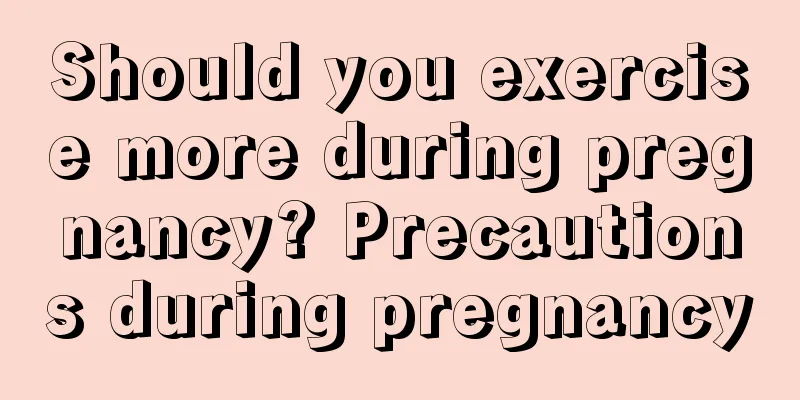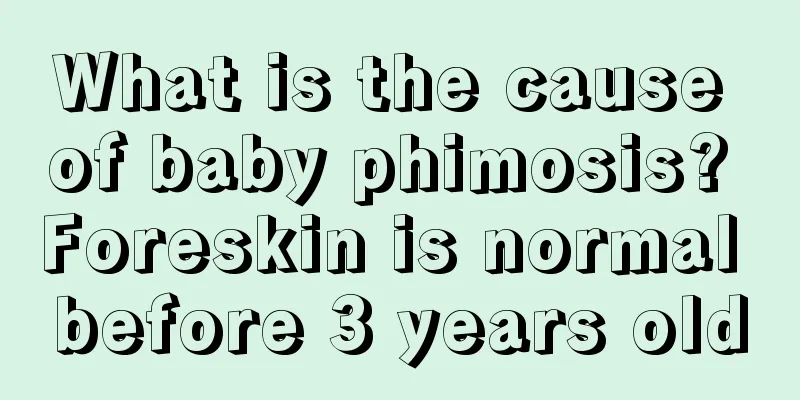What are the benefits of giving your baby massage? Massage techniques illustrated

|
Regular massage of your baby can bring him more benefits, more parent-child time, more sensory stimulation, and healthier development. Your touch is one of the most important experiences to help your baby grow up happily. Studies have shown that frequent touch and massage from parents or caregivers is very important for the baby's growth and development and communication and learning. Touch: Our first languageIn many ways, touch is our first language. Gentle touch can help babies thrive and reduce anxiety. Studies show that babies who are touched frequently are 50% more likely to make eye contact and are three times more likely to show a happy expression than babies who are not touched frequently. Many hospitals and confinement centers ask mothers to hold their babies on their chests or abdomens to allow them to have as much skin-to-skin contact as possible. The close contact between you and your baby can help stabilize your baby's breathing and bring you closer together—a process known as bonding or attachment. Bonding and other benefits of infant massageMassage is a great way to help you bond with your baby. This is important for your child's development, as many researchers and clinicians believe that a positive connection between mother and child can lay the foundation for future relationships. In addition to helping you bond with your baby, regular massage can: 1. Soothe the baby and reduce crying 2. Promote digestion and help relieve abdominal cramps, bloating and constipation 3. Helps with daily weight gain 4. Make it easier for your baby to adapt to nighttime sleep and help him sleep more soundly 5. Relieve nasal congestion and discomfort caused by teething 6. Helps develop good muscle tone, coordination and flexibility 7. Improve body awareness 8. Stimulates the Immune System 9. Make your skin smoother and more delicate 10. Make you and your baby calmer and more relaxed 11. Boost your confidence in caring for your baby Your touch helps your baby begin to form an emotional connection. This contact lays the foundation for your baby's future emotional and intellectual development. So the next time you give your baby a post-bath massage, know that this loving gesture is important to his development and can have lasting positive effects. Baby Massage TipsHere are some baby massage tips and tricks that can help you prepare to give your baby a safe and gentle massage while ensuring that this moment has greater meaning. Note: If your baby is sick or has just had a vaccination, do not massage your baby because the injection site may still be painful. Choose a time when your baby is fully awake and not too hungry or full Make sure the room is warm and the lighting is not too strong Gather the necessary items: baby oil, towels, clean diapers and clothes Wash your hands and remove any jewelry you are wearing Place your baby in a safe and comfortable place for massage, where he or she can clearly see your face. Before you begin, take a few deep breaths to relax yourself – this will also help your baby relax Babies change from moment to moment. For example, a young baby may feel more secure when he or she is clothed and close to a parent's body. Use a well-mixed baby oil or lotion and apply a small amount to your hands—just enough to glide your hands smoothly over your baby's skin. It is best not to apply baby oil or lotion to irritated or red skin. If the rash persists, discontinue use. Always read the instructions carefully before using any product. Newborn Massage GuideMassage your newborn baby: Touch is an effective way to convey your love to your baby. In the first few months, use slow, confident strokes and don't spend too much time on any one area. Most newborns may feel overstimulated in the first few months and want to be held in their parents' arms for comfort, while some may just want a gentle back rub through their clothes. Keep your hands light: If your baby is open to massage, start with the hands-free technique. Use this hands-free technique before massaging any part of the body. It can also be used when your baby needs a break during massage. It's a great way to help your baby feel secure and enjoy the touch. Legs: Before you begin, make sure you have enough baby oil on your hands. Start your newborn baby's massage with the legs, as this is usually the area they will be most receptive to. A downward massage will help your baby relax. Legs - Milking: With one hand, gently hold your baby's ankle. With the other hand, place your baby's thigh on top and push down the leg to the ankle. Use firm but gentle rhythmic movements, alternating hands. Feet: Babies usually enjoy foot massages. If your baby is sensitive, pay attention to his reactions. Gentle foot massage can have a positive effect on the whole body. Gently rub each toe with your thumb and index finger. Use your thumb to move from the toes to the ankle. Repeat several times. abdomen: After your baby's umbilical cord has healed, gentle abdominal massage can help digestion and relieve abdominal discomfort. Start by gently placing your hands on your baby's abdomen to establish a sense of security. If your baby is happy, gently slide your hands alternately over the abdomen. Back: Skin-to-skin contact can help your baby bond with you. Hold your baby against your chest and massage his or her back from the neck toward the hips. Infant Massage Guide: Six Weeks and Beyondabdomen: Abdominal massage can not only help your baby build a sense of security, but also relieve abdominal discomfort such as colic and constipation. If your baby feels happy, gently slide your hands alternately on the abdomen. First, place one hand gently. Use your right hand to draw an "I" from top to bottom on the baby's left abdomen (that is, your right side). Draw an upside-down "L" from the right side of the baby's abdomen to the left side. Start from the lower right side of the baby's abdomen, go up across the abdomen and then slide to the lower left side of the abdomen, and draw an upside-down "U". While massaging, gently say to the baby: "I love you." Chest: A gentle chest massage can help relieve breathing problems. As you massage the sensitive chest area, sometimes pause and place your hands to share the feeling with your baby. Place your hands in the center of your baby's chest and push them out to the sides, following the contours of the ribs, as if you were smoothing the pages of a book. Slide down and then back to the center of the chest, remembering to keep your hands close to your baby's body. Relaxation by touch: Relaxation touch can be used at any time during massage and is not limited to any age. Your baby's body may be tense at times, and using this technique on the arms and legs can help your baby relax. Gently hold your baby's arms or legs and tell your baby to relax. Repeat "relax" in a calm voice. When you feel your baby respond, give positive feedback with a smile or a kiss. Hands: This method can teach your baby to relax his hands. Use the pad of your thumb to gently open your baby's hand, then use your thumb and index finger to gently knead each of your baby's little fingers, and finally push the back of the hand from the wrist to the fingertips. Face: Facial massage can help relieve muscle tension caused by sucking, crying or teething discomfort. Your baby will imitate your expressions and movements. This is a wonderful time to make eye contact and have fun with your baby. Use your fingertips to make small circles along your baby's chin. Back: Back massage strengthens the neck, shoulders and arms, helps your baby lift his head, and has a calming and relaxing effect. There are many different positions that can encourage your baby to enjoy lying on their tummy. You will learn about the different positions in your baby massage class. Have your baby lie on his or her stomach, then place your hands on either side of the upper back at right angles to the spine. Move your hands back and forth in opposite directions. First push from the upper back to the buttocks, move up to the shoulders, and then move down again. Then push from the baby's neck all the way to the feet. Infant Massage Guide: Six Months and UpRub the little stick legs: Rolling your baby's calves is a fun activity that increases body awareness. When your baby shows signs of enjoying this activity, you can add a song. Remember to slow down the song so your baby can enjoy it. Use your hands to roll from the thighs to the ankles. If your baby has longer legs, adjust this technique to roll from the knees to the ankles. Back: If your baby wants to sit up, you can adjust the massage technique. Massaging in this position helps your baby prepare for sitting up on his own and strengthens his back muscles. It can also be used as a soothing bedtime ritual. Alternate your hands from the neck to the hips. Your baby may want to play with toys while you massage him. Gentle Activities: Gentle activities are a set of simple movements that help your baby develop coordination, align the spine and maintain your baby's flexibility. You will learn more about them when you visit the massage course, but here are some examples for your reference. Cross, cross, cross, open: Place your baby's arms in front of his chest and cross them three times, alternating between left and right arms. Then gently pull your baby's arms apart. The sequence of movements is: cross, cross, cross, open. Repeat. Finally, give your baby a kiss and hug. The power of smellSmell: The key to lasting memories Smell evokes memories that are more emotional and pleasurable than any other sense. The ability to smell, and the connections it creates, develops from the earliest days of life. From birth, babies rely on their sense of smell to navigate the world more than any other sense. In fact, this is where bonding with your baby begins—babies can recognize their mothers simply by smell. Within a few weeks of birth, your baby's brain will experience and connect the feelings and smells it has experienced. When a pleasant smell is accompanied by a loving touch, it can create a memory that your baby will never forget. Why does smell trigger memory more than any other sense? Why is fragrance more than just a pleasant smell? It all has to do with the wiring of your brain. When we see or hear something, the signal is sent to the thalamus, a brain region that acts as a gatekeeper before the signal enters the brain. But when we smell something, the signal is sent directly to the brain region responsible for processing smells—the olfactory bulb. This smell-processing area is connected via olfactory pathways to the amygdala, which controls emotion, and the hippocampus and entorhinal cortex, which control memory. Therefore, smell activates these areas faster than other senses and induces more emotion-related memories. |
Recommend
What diapers should babies use in summer? Recommendations for diapers suitable for summer
Summer is here, the weather is hot, and the baby&...
Electronic products have a great impact on children's growth, so avoid addiction
In this era of information explosion, there are t...
Does taking emergency contraceptive pills affect the fetus?
Women who are not ready to have children and acci...
What are the consequences of a child's severe calcium deficiency?
Calcium deficiency in children is a relatively co...
What characters should be avoided when naming a baby girl? How to name a baby girl based on her birth date?
There are many ways to name a baby. Every family ...
How to distinguish the authenticity of super laundry detergent? The advantages of super laundry detergent
Soon after Super Power Laundry Detergent was laun...
How to prevent jaundice during pregnancy and pay attention to daily life
Many newborns will have neonatal jaundice when th...
Will the areola always become darker during pregnancy? Will other parts of the body also become darker during pregnancy?
Many people will find that women’s nipples will b...
Can Omo sterilizing liquid be used to wash underwear? Can Omo sterilizing liquid be used together with laundry detergent?
Compared with disinfectant, sterilizing liquid is...
What is the difference between an umbilical patch and an umbilical cord patch? How to tear off the umbilical patch?
Umbilical cord protectors are products that prote...
How to solve the problem of baby spitting up milk How to burp the baby spitting up milk
It is very common for babies to spit up milk. Thi...
What does internal inspection check? How is it conducted?
Many mothers who have given birth know that befor...
Why can't the electric toothbrush be charged? Can the elderly use electric toothbrushes?
An electric toothbrush can be used for about two ...
When is the most accurate time for early pregnancy test? When can early pregnancy test be used?
Many women tend to use early pregnancy test strip...
What to do if your baby is frustrated and doesn't want to go to school
The psychological endurance of babies needs to be...









